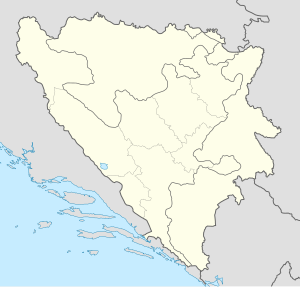Operation Corridor 92
| Operation Corridor 92 | |||||||
|---|---|---|---|---|---|---|---|
| Part of the Bosnian War | |||||||
|
The objectives of Operation Corridor 92 on the map of Bosnia and Herzegovina |
|||||||
|
|||||||
| Belligerents | |||||||
|
|
|
||||||
| Commanders and leaders | |||||||
|
|
|
||||||
| Units involved | |||||||
|
|
|
||||||
| Strength | |||||||
| 40,800–54,660 soldiers | 5,000–20,000 soldiers | ||||||
| Casualties and losses | |||||||
| 413 killed 1,509 wounded |
1,261 killed 6,250 wounded |
||||||
| 116 civilians killed in Slavonski Brod, Croatia | |||||||
Operation Corridor 92 (Serbian: Операција Коридор 92, Operacija Koridor 92) was an operation conducted during the Bosnian War by the Army of Republika Srpska (VRS) against the forces of the Croatian Defence Council (HVO) and the Croatian Army (HV) in the Bosanska Posavina region of northern Bosnia and Herzegovina between 24 June and 6 October 1992. The objective of the offensive was to re-establish a road link between the city of Banja Luka in the west of the country and the eastern parts of the territory controlled by the Bosnian Serbs. The offensive was prompted by the capture of Derventa by the HV and the HVO – a move that blocked the single overland road between the VRS-controlled territories.
The VRS successfully recaptured Derventa and pushed the HVO and the HV north, capturing several towns in the process. In the second phase of the offensive, the VRS reached the Sava River, the border with Croatia, and destroyed a bridgehead held by the HV and the HVO at Bosanski Brod. The offensive involved more than 60,000 troops and resulted in heavy casualties for all sides, especially the HVO. The Croatian National Defence Council commissioned a report into the loss of Bosanska Posavina and blamed internal conflicts, a double chain of command and ineffective counterintelligence for the defeat. The outcome later caused speculation that it was the result of a political arrangement between Serb and Croatian leaders to secure a land trade, though a Central Intelligence Agency analysis rejected such allegations.
As the Yugoslav People's Army (Jugoslovenska narodna armija – JNA) withdrew from Croatia following the acceptance and start of implementation of the Vance plan, its 55,000 officers and soldiers born in Bosnia and Herzegovina were transferred to a new Bosnian Serb army, which was later renamed the Army of Republika Srpska (Vojska Republike Srpske – VRS). This reorganisation followed the declaration of the Serbian Republic of Bosnia and Herzegovina on 9 January 1992, ahead of the 29 February – 1 March 1992 referendum on the independence of Bosnia and Herzegovina. This declaration would later be cited by the Bosnian Serbs as a pretext for the Bosnian War. Bosnian Serbs began fortifying the capital, Sarajevo, and other areas on 1 March. On the following day, the first fatalities of the war were recorded in Sarajevo and Doboj. In the final days of March, Bosnian Serb forces bombarded Bosanski Brod with artillery, drawing a border crossing by the HV 108th Brigade in response. On 4 April, JNA artillery began shelling Sarajevo.
...
Wikipedia

